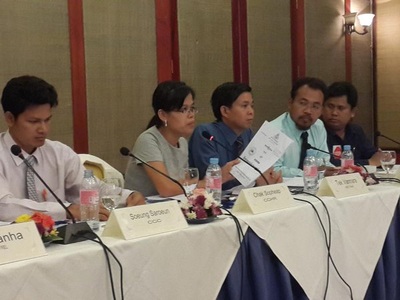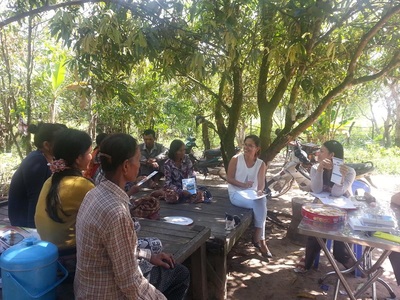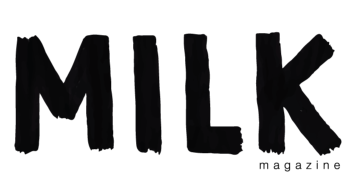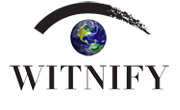| BANYAN BLOG |
banyan blog
|
This is the third edition of the popular Young Leaders Series. This series aims to inspire, motivate and tell a more positive story of Cambodia through the next generation of leaders. Too often we only hear about the problems plaguing Cambodia. This special series is dedicated to recognizing the intelligence, talent, creativity, innovation, and promise of Cambodia’s future. Each week in February and March through a series of interviews, I will profile a young leader, all under the age of 35, who is contributing to Cambodia’s development in various fields.
This third series focuses on Khmer diaspora who are coming back to Cambodia to make a difference. These are the children who were born in refugee camps after the fall of the Khmer Rouge or born in a country outside of their native homeland. Many grew up battling poverty, racism, identity crisis and a search for a sense of belonging. Yet, whether they expected it or not, pivotal moments in their lives brought them back to Cambodia. Whether they are temporarily or permanently living in Cambodia, they contribute in their own unique ways to their homeland. Through their stories, you will hear the other side of the Cambodian journey; from growing up oceans away, and overcoming their own struggles and triumphs; to coming back to playing an active role in helping to redefine Cambodia. While the challenges they faced may have been different than their counterparts, their resolve to overcome obstacles, drive for success, and desire to help build a better future for their country are the same. Whether they are Khmer-French, Khmer-American or Khmer-Canadian, their journey is part of the collective Cambodian experience and their contribution back to their native homeland is also important.
0 Comments
In the run up to the 2016 Young Leaders Series, I caught up with a few of the 2015 Young Leaders. Here's what some of them were up to in 2015. Stay tuned for the upcoming 2016 Young Leaders group, soon to be published. Chak Sopheap, Executive Director, Cambodian Center for Human Rights, CCHR
Click here to read her 2015 Young Leaders Interview. Q: What were your biggest challenges in 2015? In 2015 I continued to encounter the trials of new leadership – we had the first ever organisational assessment at CCHR and used this as the foundation for our new strategic plan, which the existing strategy lasted by the end of 2015. I had to ensure the entire process was conducted in a transparent, participatory and accountable manner. As this was the first time we had ever completed such an assessment of the organization and a new wider consultative approach for strategy plan, it was a challenge to ensure we met the set goals within the given timeframe. At times it was stressful when things were delayed due to the demands of the participatory process, accommodating stakeholders' schedules, as well as consolidating much valuable input together. In addition, the deterioration of the human rights and political situation in 2015 pressed the organisation and its leadership to be proactive and balance its operations when unexpected advocacy efforts were required, such as the Stop and Consult campaign on the Law on Associations and Non-Governmental Organizations (LANGO), and when we needed to react to restrictions on fundamental freedoms. Q: What were your biggest accomplishments in 2015? Our organizational assessment was positive which proves that we are on the right track in terms of our actions and response to human rights concerns, and serving to the best of our ability our beneficiaries – affected communities - who are the reason for our work. A new and robust strategy has been defined, which will guide us for the next 5 years. Throughout the process, the openness we gained internally from our staff and stakeholders has enabled us to learn and get the most out of our Strengths, Weaknesses, Opportunities and Threats (SWOT) analysis. Q: What projects/activities will you be working on in 2016? CCHR has developed new core focus areas for programs in its Strategic Plan, which will inform key program areas for the next five years, and include protecting fundamental freedoms; judicial and legislative reform; equality and discrimination; business and human rights; and political participation, rights and reform. In addition to our existing projects, we have recently launched a new and innovative project – the Promoting and Protecting Digital Rights Project, which will focus exclusively on the protection of human rights in the digital context. Q: What are your hopes for 2016. My wish as always is to see Cambodians be able to enjoy the ability to exercise freely their rights so we can reach our full potential as a country. With our youths becoming increasingly active as agents of change, I have high hopes for Cambodia’s democratic future. There are social norms in every society and Cambodia is no different. It may even have more rules given the ancient culture, reverence to authority and social hierarchy that is prevalent in virtually every aspect of society. There are certain social rules one should be aware of; from how Khmer people address each other through honorific titles, manners in the pagoda, family dynamics, to the work environment. Here are some basic do’s and don’ts in Cambodian culture that may come in handy as you navigate through the complex social norms.
(Some information has been gathered through other websites, conversations with colleagues, and recollections from childhood). This month I turned 40. Saying that number out loud sounded worse with the sound of my voice, than in my head. When I was in my 20s, 40 seemed so distant. It was the age of my parents. Being 40 at that time meant being old and responsible. They seemed to be too busy working to enjoy life. I didn’t know what I would be like when I reached 40, but I knew the life I would lead would be vastly different than theirs. At that time, it was too far off in the distance, an intangible age that was difficult to imagine where I would be and what I would be doing.
Then one day, it crept up like a blink of an eye. I woke up and I was 40. In Cambodia of all places. It’s not only the significance of a new decade that has left me reflecting on my personal journey, but also my country and how in many ways we paralleled each other. On October 10, 2015, the Phnom Penh Post published a piece called "A Return to the Roots: Diaspora Rebuild." The article begins with an introduction of a new documentary by Canadian-Cambodian graffiti artist Fonki Yav who encourages the Cambodian diaspora to come back to the motherland and contribute to the revival of the nation. The article provokes the question: Do Cambodian overseas owe a duty to their homeland?
My answer is YES. The twists and turns of life don’t often lead to where you expect, nor does it give you a plan when you get there. If you had asked me when I was 13 years old if I was Khmer or American, I would have said "American." If you would have asked me at 18 if I would I like to visit Cambodia, I would have said "No." I had no interest back then, let alone expect I would live here 20 years later.
The lights dim, a black and white screen appears transitioning into a counter, 4.3.2.1. It fades to black and opens to a crackling sound and an image of a fuzzy TV screen. Then Tom Brokaw, a popular American anchorman in the '90s appears on screen reporting the shocking death of Cambodian actor Haing S. Ngor in 1996 in a shooting in Los Angeles...
I've been living in Cambodia for almost two years and early into my second year I finally got the nerve to drive here. We purchased a car, I obtained my license and bought insurance in case anything happened. In my first few weeks I was only brave enough to drive to some shops and restaurants by my house (usually less than a mile) and mostly took empty side streets. Each day I became more emboldened to drive farther from my comfort zone, albeit still short distances from home. I thought, “driving here is not so bad after all. I could do this”, but that was my nativity speaking based on the hand full of times of driving in off peak hours, short distances and with very little traffic.
One of the most dangerous moments in a woman’s life is giving birth, especially when access to quality medical care is not easily available. In Khmer, the term to give birth is called “ch’long tonle” which means to “cross the river”. The elders use this phrase to describe the dangerous journey of crossing the river, which was oftentimes difficult and dangerous. Some would make it, others would drown. The phrase is appropriate in describing the perilous and uncertain journey of childbirth.
|
FEATURED INMOST POPULARThe Journey Archives
March 2017
follow |
© banyan blog 2013-2021
All Rights Reserved
All Rights Reserved





